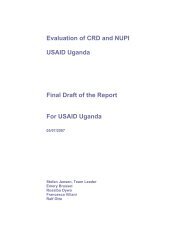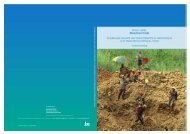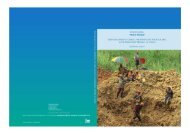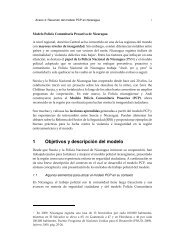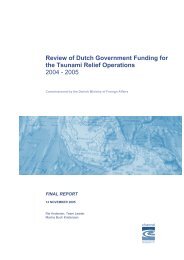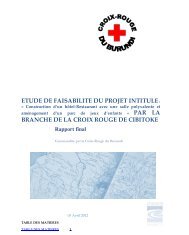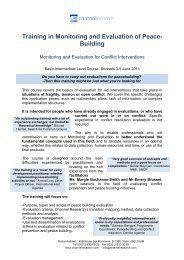A ripple in development? - Channel Research
A ripple in development? - Channel Research
A ripple in development? - Channel Research
You also want an ePaper? Increase the reach of your titles
YUMPU automatically turns print PDFs into web optimized ePapers that Google loves.
7 Conclusions<br />
The conclusions here are structured by return<strong>in</strong>g first to the premises of<br />
the <strong>in</strong>ternational and national responses to natural disasters, and weigh<strong>in</strong>g<br />
the <strong>in</strong>fluence of LRRD aga<strong>in</strong>st other factors. The second section<br />
reviews the f<strong>in</strong>d<strong>in</strong>g of LRRD1 <strong>in</strong> 2006 to see what changes have<br />
occurred over time <strong>in</strong> LRRD itself. The subsequent chapters draw out<br />
key f<strong>in</strong>d<strong>in</strong>gs from each one of the themes, establish<strong>in</strong>g l<strong>in</strong>kages that<br />
could lead to effective LRRD.<br />
7.1 The need for l<strong>in</strong>kages to be based on structural analyses<br />
The comprehensive focus of the present evaluation on the broad spectrum<br />
of recovery efforts still only covers a relatively small part of all the<br />
contributions made to the improvement of the situation on the ground.<br />
The Document Review even concludes that despite the dramatic nature<br />
of the tsunami, it is clear that contextual issues are a bigger constra<strong>in</strong>t<br />
on <strong>development</strong> than the tsunami or its aftermath.<br />
Referr<strong>in</strong>g to health and education <strong>in</strong> Aceh, a World Bank study<br />
noted that “strik<strong>in</strong>g long-term structural problems outweigh the shortterm<br />
challenges after the tsunami” 99 . Conflict and structural issues have<br />
had a larger impact than the relief effort on achiev<strong>in</strong>g population<br />
focused outcomes. In Chapter 2 on the state and civil society for example,<br />
we have noted that at all levels structural factors prevail, whether it<br />
be the difficulties <strong>in</strong> implement<strong>in</strong>g decentralisation policies, the fragile<br />
status of national civil societies, the political dynamics of the end<strong>in</strong>g of<br />
conflict, and weak accountability <strong>in</strong> the affected areas.<br />
This confirms that it is the overall <strong>development</strong> dynamics (be they<br />
structural or from conflict), rather than the “<strong>ripple</strong>” of the tsunami<br />
response, which are the predom<strong>in</strong>ant forces of recovery after such a<br />
99<br />
World Bank. (2006a). Aceh Public Expenditure Analysis – Spend<strong>in</strong>g for Reconstruction and Poverty<br />
Reduction. World Bank. Last viewed on 27 October 2008.<br />
107




